Indigo Nation has dipped its marketing hands in — what else, but — something blue. Bluetooth technology, that is.
As mobile phones become purchase facilitators, an advertising niche is being created
MUMBAI: Indigo Nation has dipped its marketing hands in — what else, but — something blue.
Bluetooth technology, that is.
The men’s clothing retailer’s Bangalore outlet recently turned into a gaming arena of sorts. Customers with Bluetooth-enabled handsets who visited the store were given a chance to download an Indigo Nation branded game for free and redeem discounts on purchases.
“With every passing level in the Indigo Nation Monster Car Rally, the user can redeem a discount coupon of 5% with a maximum of 20%,” said Kanwalpreet Walia, marketing manager, Indus-League Clothing Ltd., which manufactures the clothing line.
Walia’s strategy was in tune with the brand’s positioning. “Indigo Nation is targeted at the under-30 working male. And considering cellphones and gaming are the in-thing for this segment of people, it made sense for us to try it out,” she says.
Try it out.
That’s what Mobile2win (the game’s creators) and Starcom IP (Indigo Nation’s media buying agency) wanted to do.
It’s what Rajiv Hiranandani, country head, Mobile2win calls ‘bluetooth marketing’.
Hiranandani says this is a very localised marketing strategy and can be put into place at retail outlets and high traffic areas.
“A week long bluetooth based activity at a particular outlet could cost about Rs 50,000. If done over a period of 2-3 months, this could cost about Rs 2-3 lakhs,” he says.
Walia claims that the conversion ratios are encouraging, too.
“We had about 4-5 redemptions in the first week itself. Currently we’re using it on a trial basis but moving forward, we’d like to use it across our other outlets.”
Walia’s response is what technology companies like Nexeia have been waiting for.
Nexeia’s created a Bluetooth-enabled technology applications for mobiles called Cellmagix, which it hopes will rope in more advertisers to try out this medium.
“We have already installed over 250 Bluetooth Access Points at all the leading malls and multiplexes across the country. Retailers can advertise about their ongoing offers on Cellmagix and a user within the mall premises who has installed it in his / her cellphone can check them out at the store itself,” says Nexeia CEO Anil Peswani.
The idea has got Cinemax excited and Devang Sampat, vice-president, marketing and programming, says that Cellmagix Access Points installed at 3 of its multiplexes in Mumbai.
“Not only can you download value added services (VAS) like wallpapers and view trailers, but also check out combo meal offers and show-timings straight on your mobile. All of it is for free. All you have to do is keep your bluetooth switched on inside the multiplex premises,” Sampat said.
However the CEO of a leading mobile marketing player says Bluetooth marketing does not yet have a convincing business model in place.
He says, “It’s not scalable and the strategy is disrespectful to the end user. Considering telemarketers are already being taken to task with the Do Not Call registry, a Bluetooth marketing ploy is being extremely intrusive.”
Still the absence of a telecom operator to take away a share of the revenue is good reason for Saurabh Vartikar, head of mobile marketing for People Infocom (Mauj Mobile), to be interested in it.
Mauj has worked with the Essar Group’s chain of mobile stores to power their Bluetooth-enabled kiosks, where customers can view various content and download them on their phone.
Pointing to its earlier work with GroupM clients such as Pepsi, Accenture and Lee jeans, Vartikar says he sees an an optimistic future for concepts such as Bluetooth marketing.
“More so because agencies are now focussing on strengthening their digital arm and are looking at strategic associations with mobile value-added services players.”
However, both Hiranandani and Vartikar agree that the market for this is still in a nascent stage in the country largely due to its technology dependency, since this medium caters only to Bluetooth enabled handsets.
“As mobile phones evolve from mere voice and data devices to purchase facilitators, advertisers can have a very good opt-in database of people within the age group of 15-24 years, most of who are out in large numbers in malls,” says Hiranandani. “This segment is otherwise difficult to reach in a captive manner.”
c_arcopol@dnaindia.net
![submenu-img]() Big update on Pakistan's first-ever Moon mission and it has this China connection...
Big update on Pakistan's first-ever Moon mission and it has this China connection...![submenu-img]() 2024 Maruti Suzuki Swift officially teased ahead of launch, bookings open at price of Rs…
2024 Maruti Suzuki Swift officially teased ahead of launch, bookings open at price of Rs…![submenu-img]() 'Kyun bhai kyun?': Sheezan Khan slams actors in Sanjay Leela Bhansali's Heeramandi, says 'nobody could...'
'Kyun bhai kyun?': Sheezan Khan slams actors in Sanjay Leela Bhansali's Heeramandi, says 'nobody could...'![submenu-img]() Meet Jai Anmol, his father had net worth of over Rs 183000 crore, he is Mukesh Ambani’s…
Meet Jai Anmol, his father had net worth of over Rs 183000 crore, he is Mukesh Ambani’s…![submenu-img]() Shooting victim in California not gangster Goldy Brar, accused of Sidhu Moosewala’s murder, confirm US police
Shooting victim in California not gangster Goldy Brar, accused of Sidhu Moosewala’s murder, confirm US police![submenu-img]() DNA Verified: Is CAA an anti-Muslim law? Centre terms news report as 'misleading'
DNA Verified: Is CAA an anti-Muslim law? Centre terms news report as 'misleading'![submenu-img]() DNA Verified: Lok Sabha Elections 2024 to be held on April 19? Know truth behind viral message
DNA Verified: Lok Sabha Elections 2024 to be held on April 19? Know truth behind viral message![submenu-img]() DNA Verified: Modi govt giving students free laptops under 'One Student One Laptop' scheme? Know truth here
DNA Verified: Modi govt giving students free laptops under 'One Student One Laptop' scheme? Know truth here![submenu-img]() DNA Verified: Shah Rukh Khan denies reports of his role in release of India's naval officers from Qatar
DNA Verified: Shah Rukh Khan denies reports of his role in release of India's naval officers from Qatar![submenu-img]() DNA Verified: Is govt providing Rs 1.6 lakh benefit to girls under PM Ladli Laxmi Yojana? Know truth
DNA Verified: Is govt providing Rs 1.6 lakh benefit to girls under PM Ladli Laxmi Yojana? Know truth![submenu-img]() Remember Heyy Babyy's cute 'Angel' Juanna Sanghvi? 20 year-old looks unrecognisable now, fans say 'her comeback will...'
Remember Heyy Babyy's cute 'Angel' Juanna Sanghvi? 20 year-old looks unrecognisable now, fans say 'her comeback will...'![submenu-img]() In pics: Arti Singh stuns in red lehenga as she ties the knot with beau Dipak Chauhan in dreamy wedding
In pics: Arti Singh stuns in red lehenga as she ties the knot with beau Dipak Chauhan in dreamy wedding![submenu-img]() Actors who died due to cosmetic surgeries
Actors who died due to cosmetic surgeries![submenu-img]() See inside pics: Malayalam star Aparna Das' dreamy wedding with Manjummel Boys actor Deepak Parambol
See inside pics: Malayalam star Aparna Das' dreamy wedding with Manjummel Boys actor Deepak Parambol ![submenu-img]() In pics: Salman Khan, Alia Bhatt, Rekha, Neetu Kapoor attend grand premiere of Sanjay Leela Bhansali's Heeramandi
In pics: Salman Khan, Alia Bhatt, Rekha, Neetu Kapoor attend grand premiere of Sanjay Leela Bhansali's Heeramandi![submenu-img]() DNA Explainer: Why Harvey Weinstein's rape conviction was overturned, will beleaguered Hollywood mogul get out of jail?
DNA Explainer: Why Harvey Weinstein's rape conviction was overturned, will beleaguered Hollywood mogul get out of jail?![submenu-img]() What is inheritance tax?
What is inheritance tax?![submenu-img]() DNA Explainer: What is cloud seeding which is blamed for wreaking havoc in Dubai?
DNA Explainer: What is cloud seeding which is blamed for wreaking havoc in Dubai?![submenu-img]() DNA Explainer: What is Israel's Arrow-3 defence system used to intercept Iran's missile attack?
DNA Explainer: What is Israel's Arrow-3 defence system used to intercept Iran's missile attack?![submenu-img]() DNA Explainer: How Iranian projectiles failed to breach iron-clad Israeli air defence
DNA Explainer: How Iranian projectiles failed to breach iron-clad Israeli air defence![submenu-img]() 'Kyun bhai kyun?': Sheezan Khan slams actors in Sanjay Leela Bhansali's Heeramandi, says 'nobody could...'
'Kyun bhai kyun?': Sheezan Khan slams actors in Sanjay Leela Bhansali's Heeramandi, says 'nobody could...'![submenu-img]() Meet actress who once competed with Aishwarya Rai on her mother's insistence, became single mother at 24, she is now..
Meet actress who once competed with Aishwarya Rai on her mother's insistence, became single mother at 24, she is now..![submenu-img]() Makarand Deshpande says his scenes were cut in SS Rajamouli’s RRR: ‘It became difficult for…’
Makarand Deshpande says his scenes were cut in SS Rajamouli’s RRR: ‘It became difficult for…’![submenu-img]() Meet 70s' most daring actress, who created controversy with nude scenes, was rumoured to be dating Ratan Tata, is now...
Meet 70s' most daring actress, who created controversy with nude scenes, was rumoured to be dating Ratan Tata, is now...![submenu-img]() Meet superstar’s sister, who debuted at 57, worked with SRK, Akshay, Ajay Devgn; her films earned over Rs 1600 crore
Meet superstar’s sister, who debuted at 57, worked with SRK, Akshay, Ajay Devgn; her films earned over Rs 1600 crore![submenu-img]() IPL 2024: Spinners dominate as Punjab Kings beat Chennai Super Kings by 7 wickets
IPL 2024: Spinners dominate as Punjab Kings beat Chennai Super Kings by 7 wickets![submenu-img]() Australia T20 World Cup 2024 squad: Mitchell Marsh named captain, Steve Smith misses out, check full list here
Australia T20 World Cup 2024 squad: Mitchell Marsh named captain, Steve Smith misses out, check full list here![submenu-img]() SRH vs RR, IPL 2024: Predicted playing XI, live streaming details, weather and pitch report
SRH vs RR, IPL 2024: Predicted playing XI, live streaming details, weather and pitch report![submenu-img]() SRH vs RR IPL 2024 Dream11 prediction: Fantasy cricket tips for Sunrisers Hyderabad vs Rajasthan Royals
SRH vs RR IPL 2024 Dream11 prediction: Fantasy cricket tips for Sunrisers Hyderabad vs Rajasthan Royals ![submenu-img]() IPL 2024: Marcus Stoinis, Mohsin Khan power Lucknow Super Giants to 4-wicket win over Mumbai Indians
IPL 2024: Marcus Stoinis, Mohsin Khan power Lucknow Super Giants to 4-wicket win over Mumbai Indians![submenu-img]() Viral video: Man's 'peek-a-boo' moment with tiger sends shockwaves online, watch
Viral video: Man's 'peek-a-boo' moment with tiger sends shockwaves online, watch![submenu-img]() Viral video: Desi woman's sizzling dance to Jacqueline Fernandez’s ‘Yimmy Yimmy’ burns internet, watch
Viral video: Desi woman's sizzling dance to Jacqueline Fernandez’s ‘Yimmy Yimmy’ burns internet, watch![submenu-img]() Viral video: Men turn car into mobile swimming pool, internet reacts
Viral video: Men turn car into mobile swimming pool, internet reacts![submenu-img]() Meet Youtuber Dhruv Rathee's wife Julie, know viral claims about her and how did the two meet
Meet Youtuber Dhruv Rathee's wife Julie, know viral claims about her and how did the two meet![submenu-img]() Viral video of baby gorilla throwing tantrum in front of mother will cure your midweek blues, watch
Viral video of baby gorilla throwing tantrum in front of mother will cure your midweek blues, watch
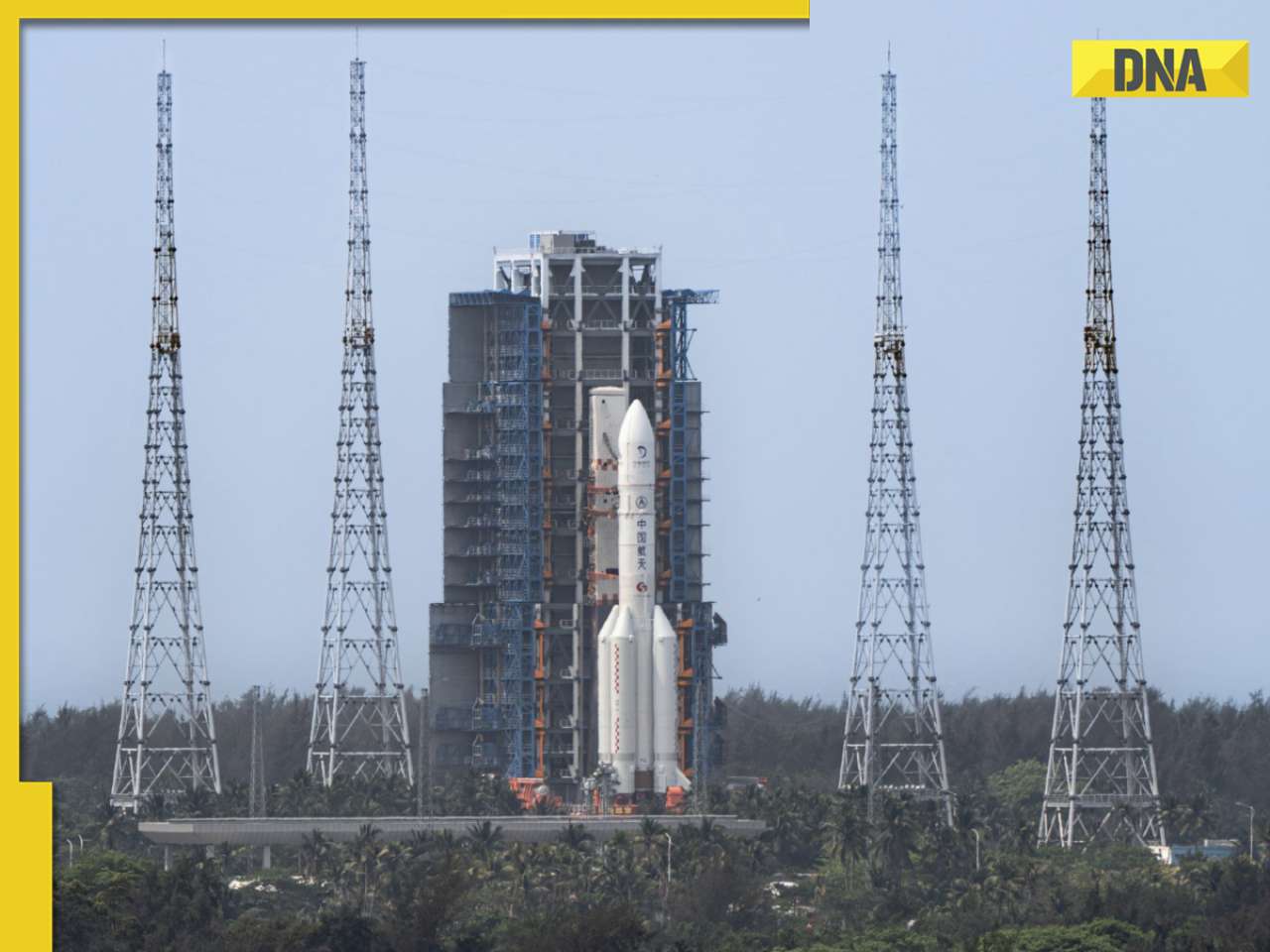
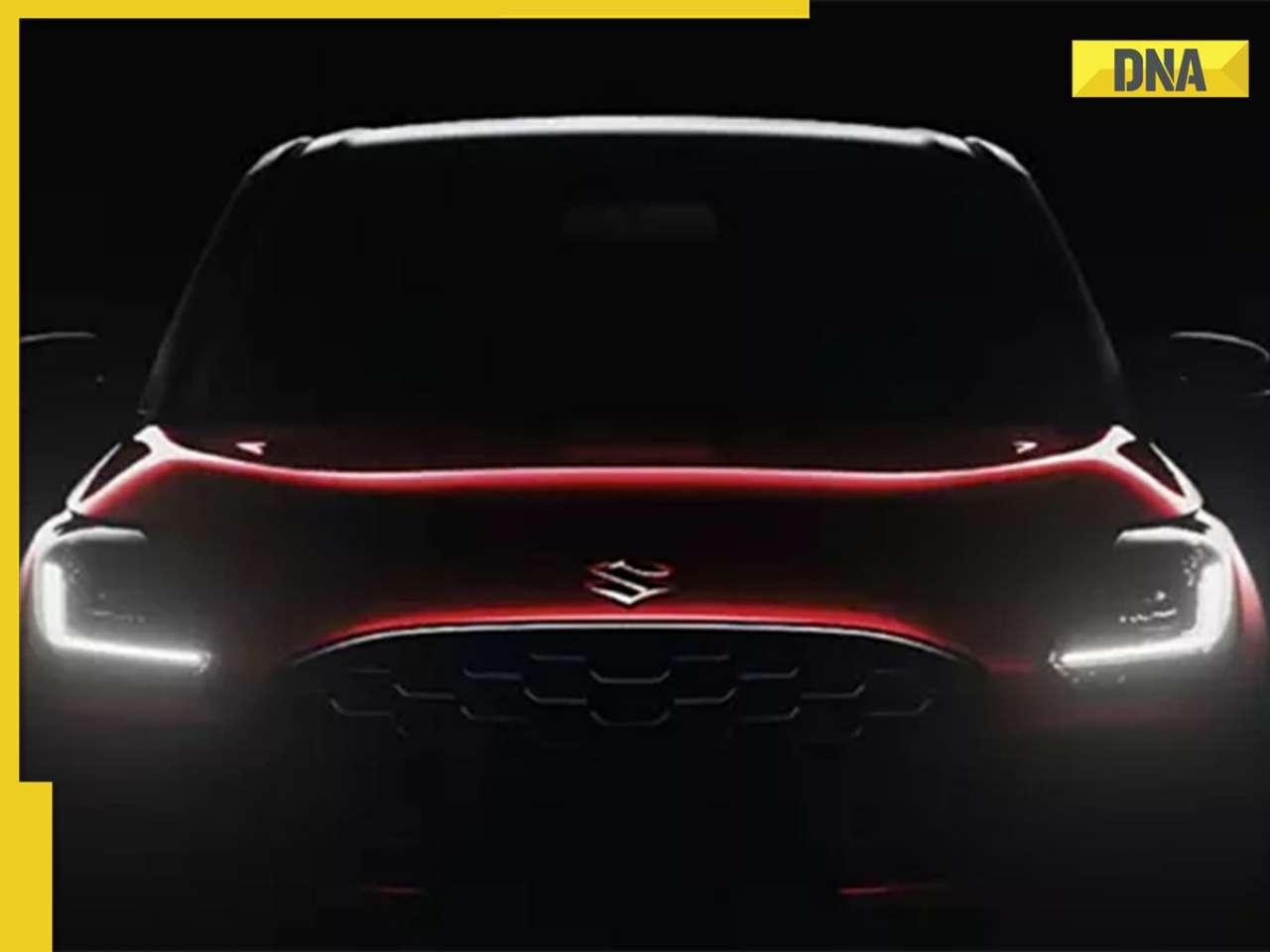

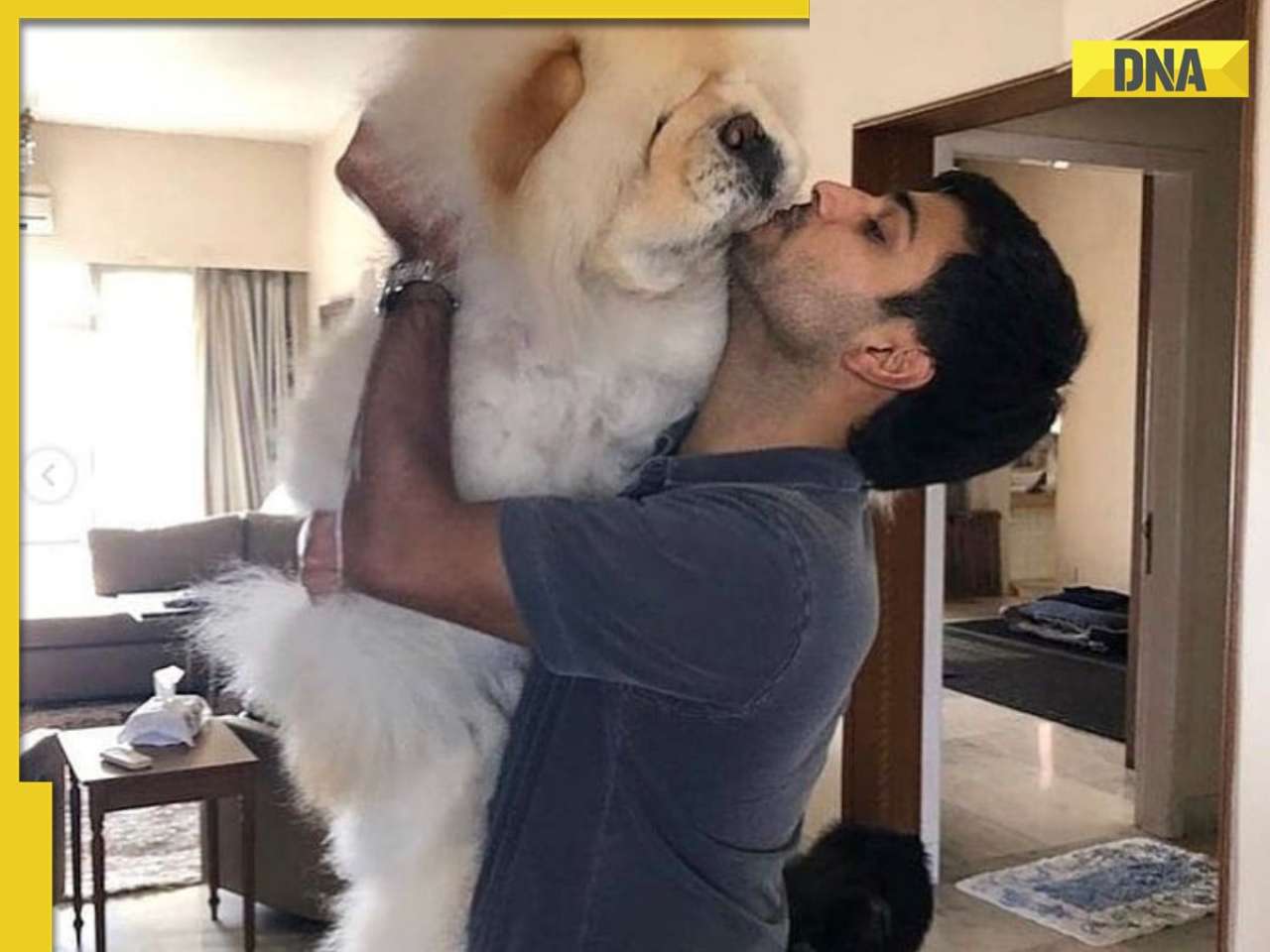
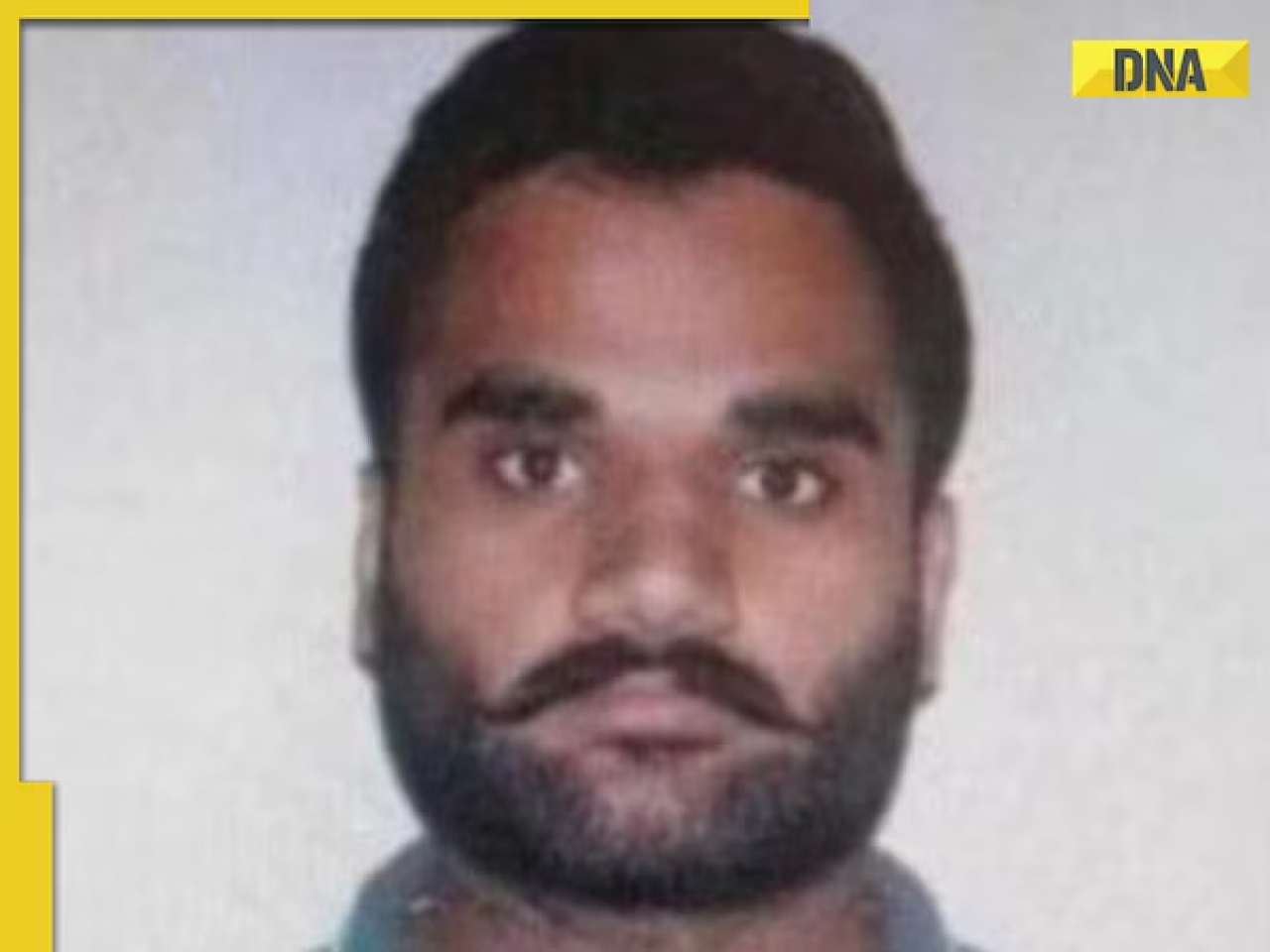





















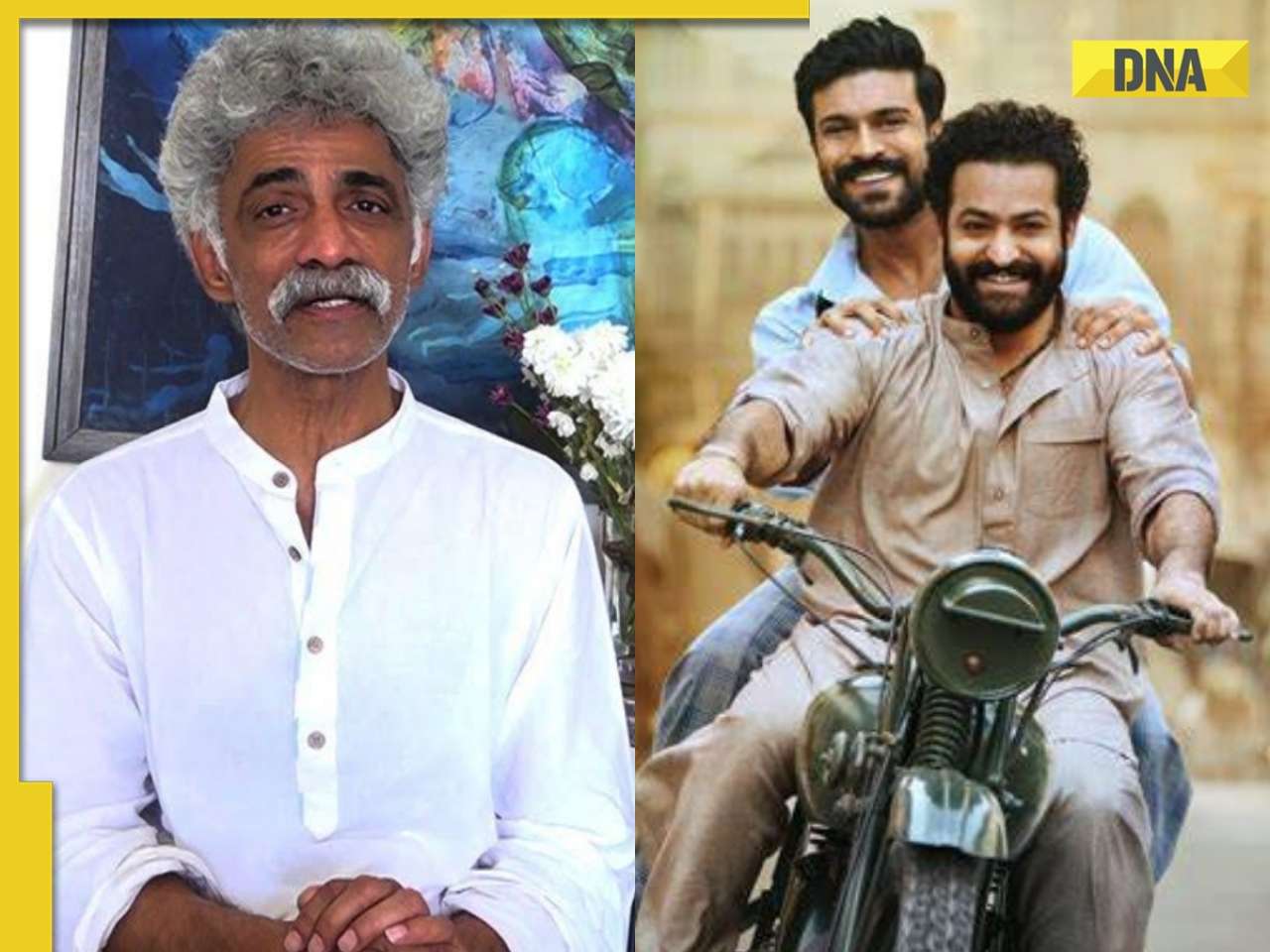
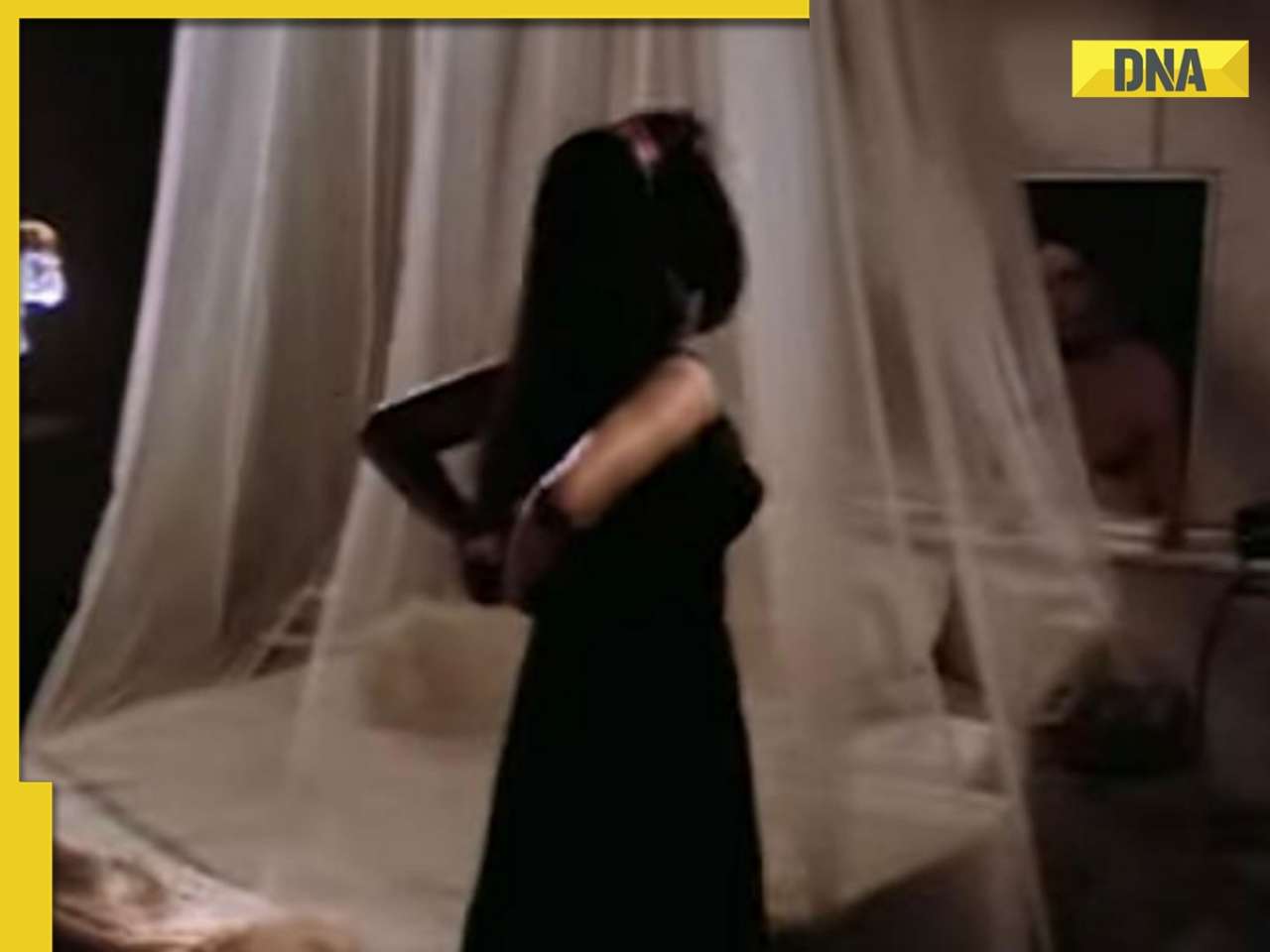

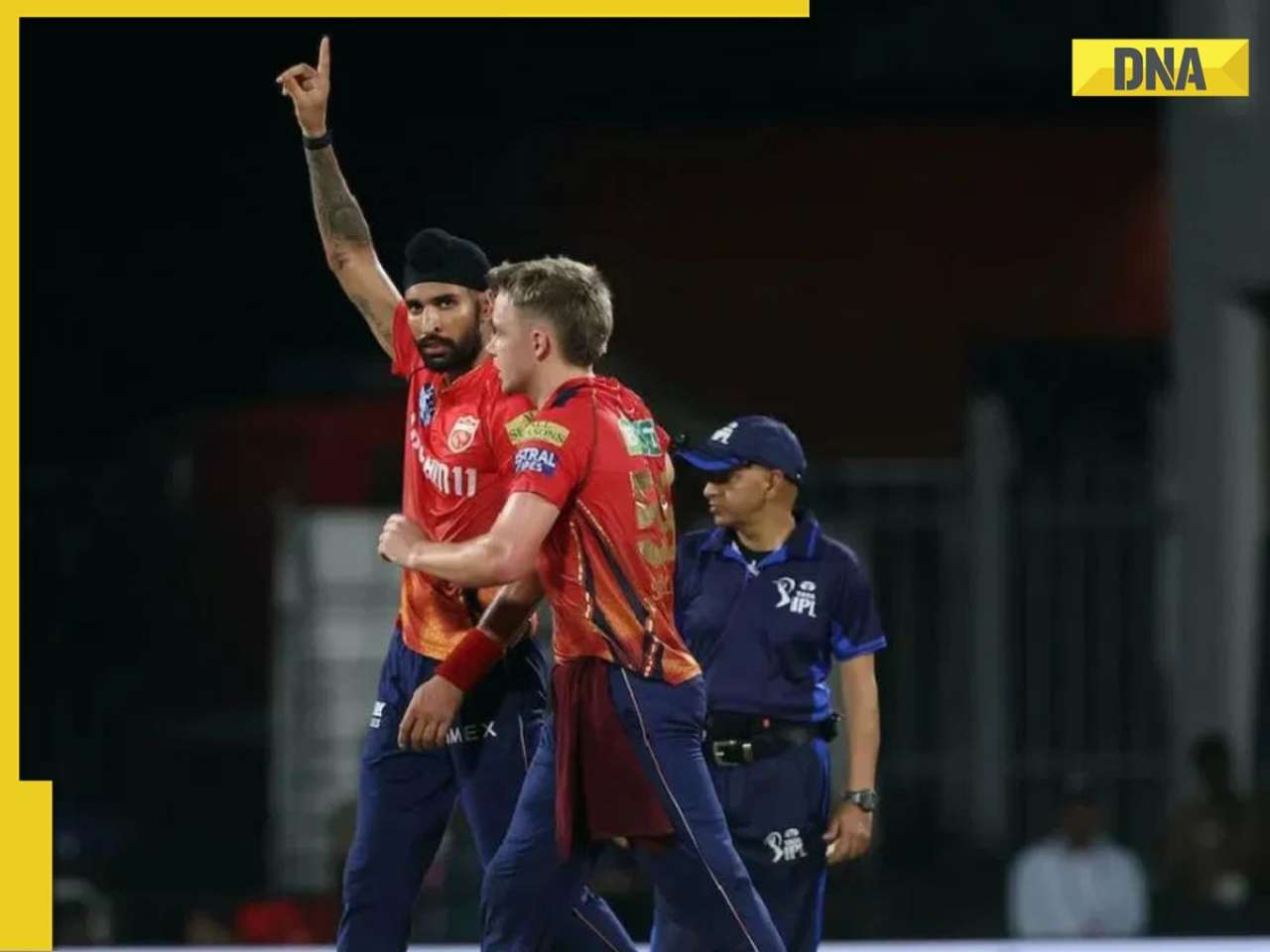

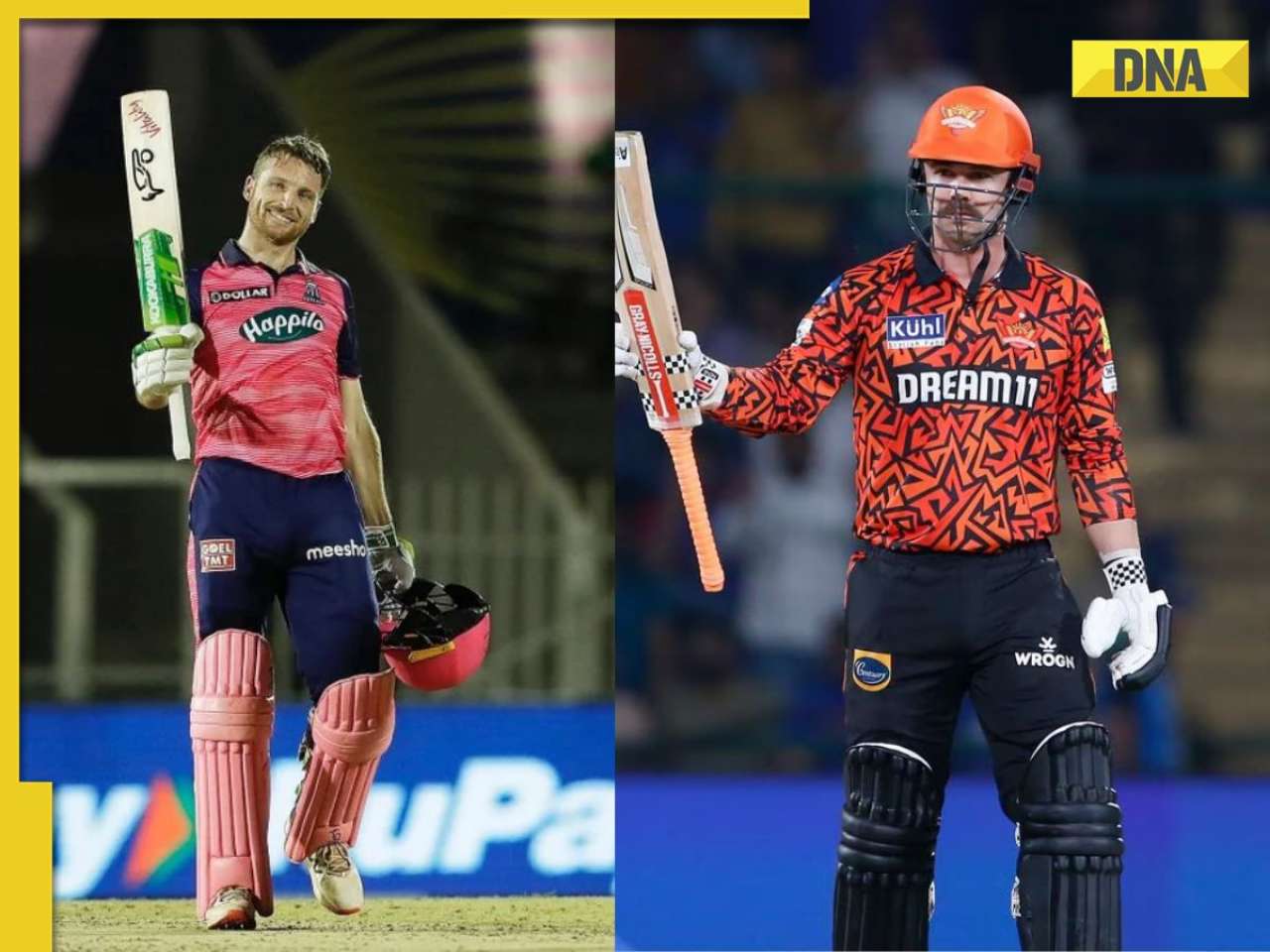
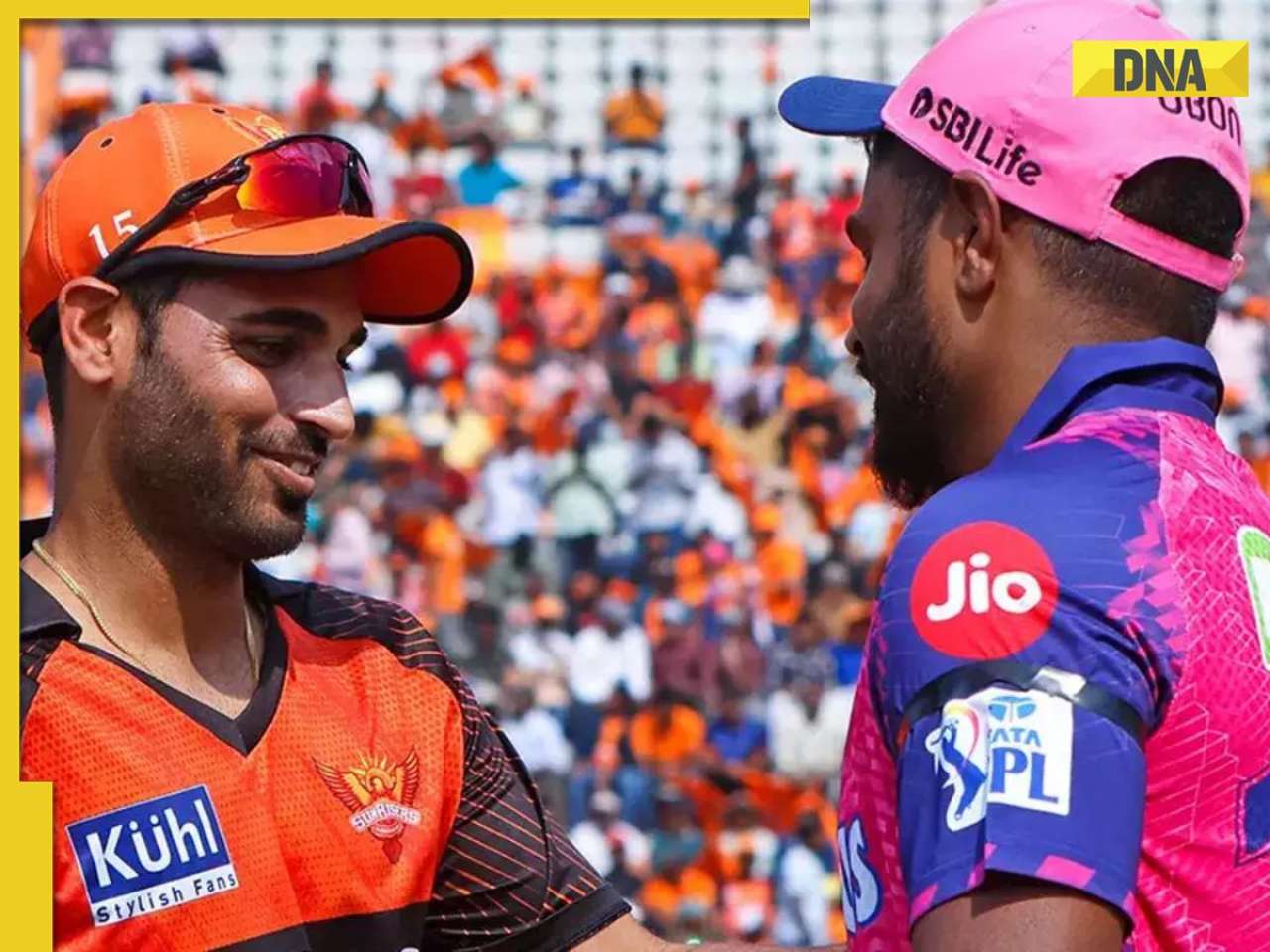



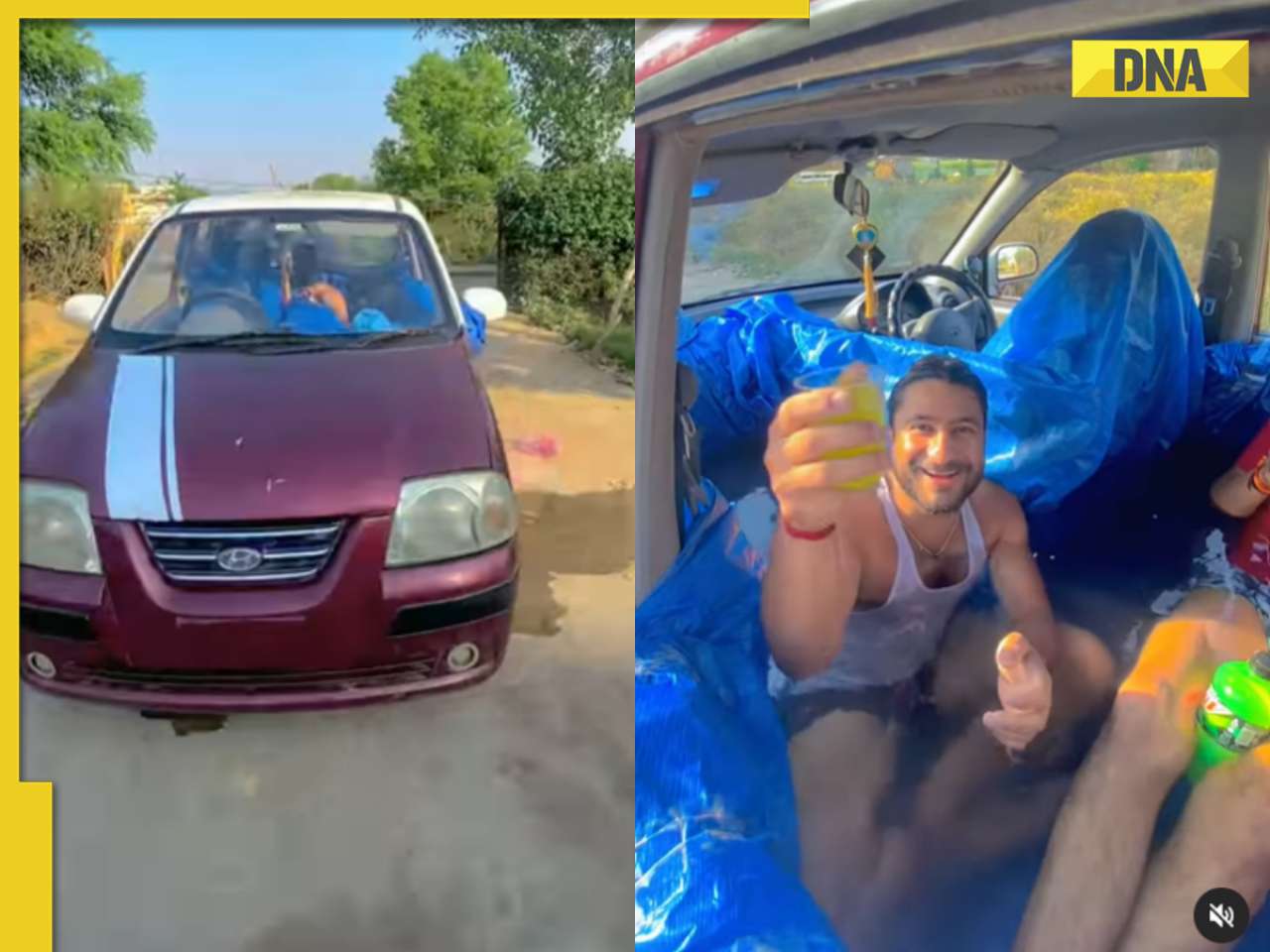

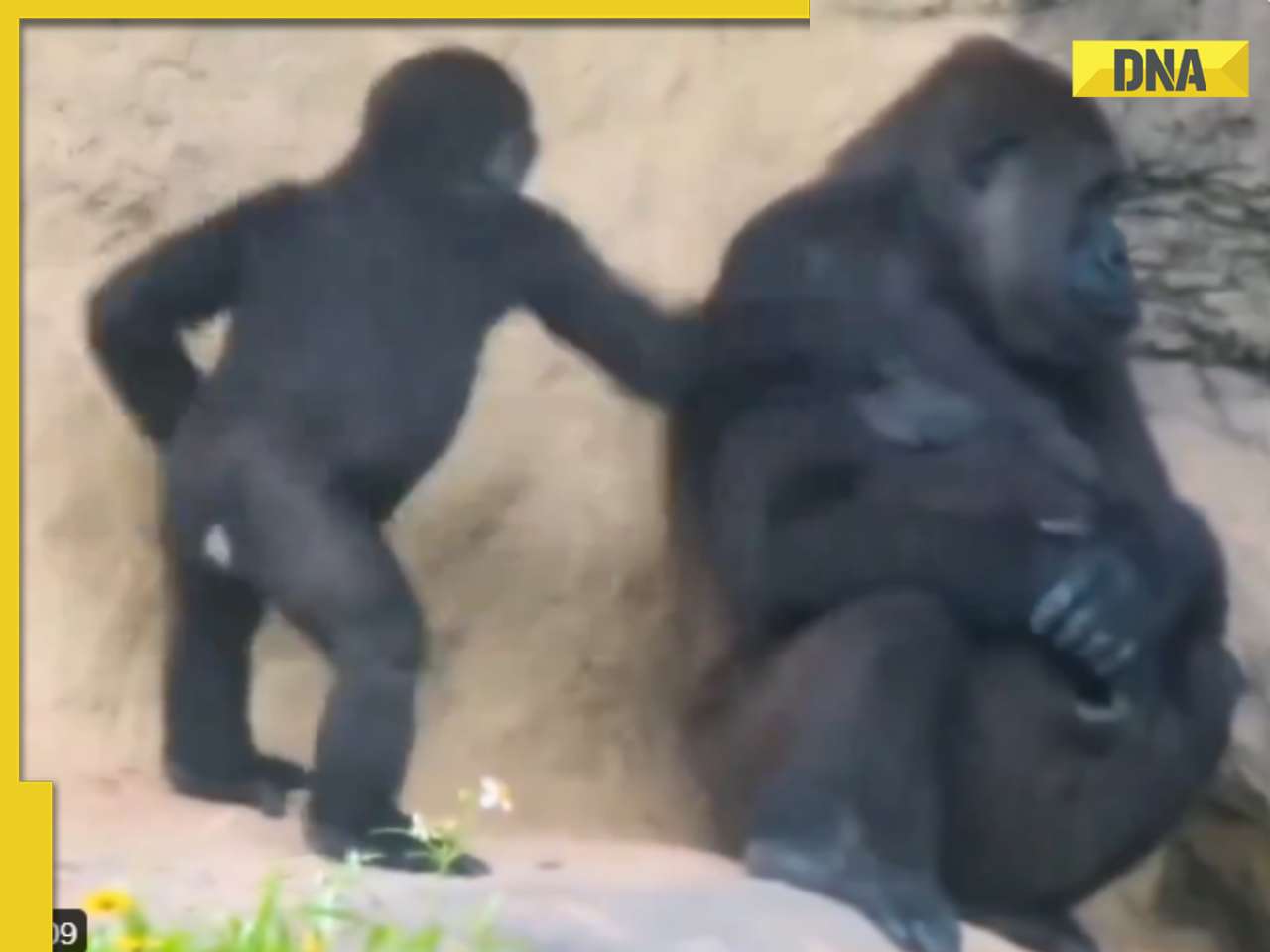











)
)
)
)
)
)